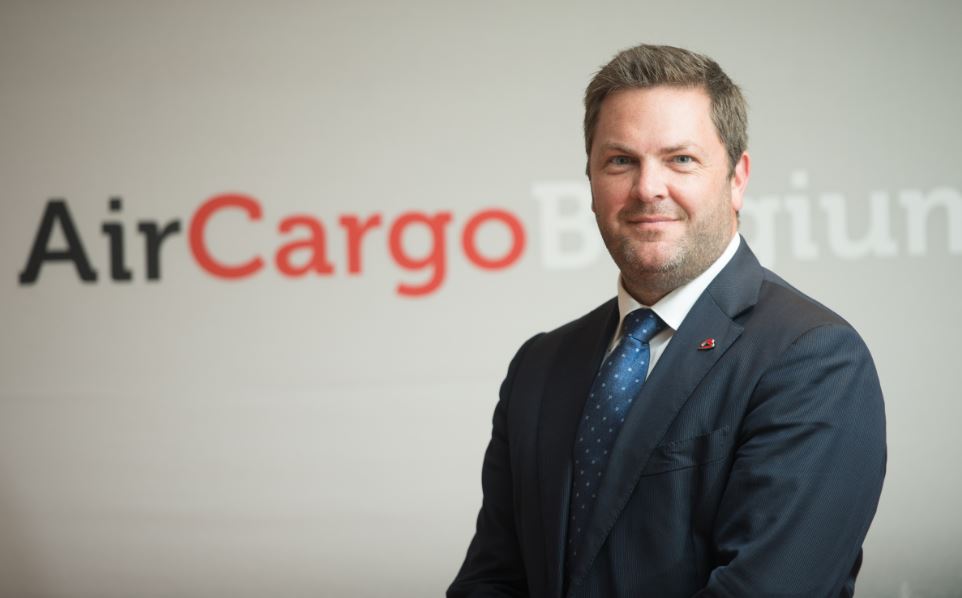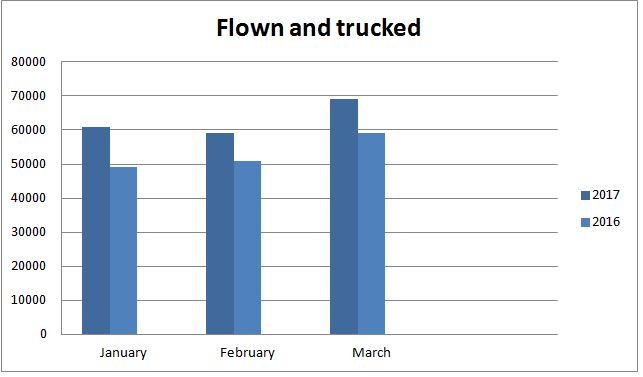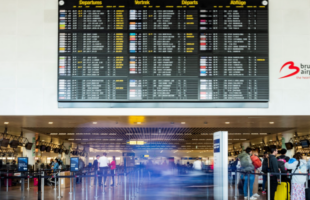
Steven Polman - Head of cargo and logistics, strategic development at Brussels Airport
Brussels airport, one of the largest airports in Europe, has grown into a multimodal transport hub. Considered as an economic power house, the airport industry is considered to play a key role in the Belgian Economy. With an annual 495,000 tonnes of cargo, Brucargo, the air cargo hub of Brussels Airport, plays an important role in international logistics and in the success of specific industries, such as the pharmaceutical industry for example.

The first half of the year has proved very successful for the airport. Speaking on cargo volumes in 2017, Steven Polman, Head of Cargo and Logistics, Strategic Development Brussels Airport said, “The first half of the year has been extremely good, with an increase in volumes of 18.8% compared to last year. All our segments show double digit growth, but especially the full freighter traffic, whcih has outperformed with a growth of 35%.”
Although the airport is experiencing noteworthy success, Polman predicts the growth rate will slow down in months to come. However, Brucargo should still end the year on a positive note, surpassing the predictions that were previously made and based off of last year’s performance. This prediction is strengthened by plans the airport has in place to ensure they continue the upward trajectory. Polman went on to add, “With some additional routes in the pipeline for the second half of this year, 2017 should end with a very good result beating any expectation or forecast we made for this year.”
An Unstoppable force
In 2016, tragedy struck Europe in the form of multiple terrorist attacks, with three bombs going off in Brussels, two of which were at the airport. In light of what happened, the airport bounced back fairly quickly.
The cargo division was not affected very much, as the they were able to resume operations three days after the attacks, returning back to normal. Polman confirmed that the biggest impact for cargo was the reduction in long haul flights and belly cargo capacity in the weeks after the attacks.
Despite all the disruption and changes that were made, the return of passengers to the airport was much quicker than expected, surprising the analysts’ forecasts with the quick turnaround. As expected, a lot of work and effort had to be put in to facilitate the processes and experience for the passengers. The final result however was an all round improvement.

Regarding security to mitigate any potential risk, Polman had the following to say: “for cargo we are strictly following local and international regulations. We looked at all our processes and procedures in detail and realized we did not need to make any immediate changes. The existing plans and execution to upgrade the BRUcargo area in terms of current facilities, such as fencing and increased security remain unchanged.”
Game Changers
Assessing the cargo carried at BRUcargo in more detail, it is clear to see that commodities are fairly balanced and typical for most European airports. There is not much difference with previous years, except for the recent spike in pharmaceutical volumes, which seem to be above market growth, for exports. Regarding imports, the airport has seen a much stronger growth trend in perishables and e-commerce in recent years.
Strong partnerships and keeping abreast with technological advances plays a big role in BRUcargo’s ability to compete within such a developed market. On this Polman said, “We, meaning our entire cargo community, are investing heavily in our open data sharing platform BRUcloud. On this platform, we are investing in different apps offering different solutions or insights to all the participating companies.”
BRUcloud, which was launched to allow the airport to develop logistics applications in the cloud, using Nallian platform, is only one of the initiatives undertaken. The application, designed as an open environment for stakeholders, has multiple functions, from illustrating data statistics to providing equipment booking tools or acting as a slot management system for the landside operations at the cargo area.
Earlier this year, the Port of Antwerp selected BRUcargo’s solutions as their future community platform with the creation of NxtPort, offering additional opportunities for the cargo community in Brussels, as they will now be able to integrate and facilitate their cargo flows a lot easier.
E-commerce, a booming market on its own, is also making a significant contribution to the airports growh. With the significant operations of specific companies such as DHL Express and Bpost / Landmark that take place with BRUcargo, Brussels airport finds itself well placed to benefit from the growth in e-commerce. Sharing on the growth of e-commerce, Polman shared that to manage this growth and be better positioned to tap in future growth, they have created an e-commerce work group within the cargo community organisation, Air Cargo Belgium. “We are all working together to not only streamline processes, but also ensure we have discussions with customs on further facilitation of all the procedures.” However, e-commerce being an ever evolving market is still experiencing many changes, especially from the traditional players. In effect, the ultimate deciding factor on just how big or small a role airports like Brussels airport will play in sustaining their part of the logistical chain in e-commerce, is still heavily dependent on the key decision makers – customers.
Another industry hot topic, Pharma is also a game changer at Brussels airport. “Indeed Pharma remains our most important target market. We meet very regular with our “pharma forum”, which was created a few years ago and consisting of almost all the important pharma manufacturers and shippers in Belgium,” elaborated Polman.
Results of these discussions are the pharma dashboard, creating transparency and insight in the acceptance process of shipments. As well as the colossal success that has allowed the pharma transporters to offer conditioned transport between warehouse and aircraft. At the moment BRUcargo are more than doubling the number of dollies at the airport.
Additionally, Brussels Airport is very keen on further developing the Pharma.Aero organisation, which was created in collaboration with Miami Airport. The alliance between the worlds’ most important pharma gateways is expanding at record pace. Created in 2016, the organisation is already able to count some important airports in their roster of members such Singapore Airport, Mumbai Airport, Sharja h Airport and Basel Airport. Direct support from the pharmaceutical manufacturers is just another indication of how Pharma.Aero is set up to win.
Moving onto a bright Future
Being a multimodal transport hub, BRUcargo has to cater to more than just freighters. Already in place, are several new second line facilities that were constructed within the cargo area, including new buildings for forwarders such Nippon Express or Panalpina.
Current notable developments in the pipeline also include the opening of a brand new 31.500 sqm first line facility for DHL Express, with a hypermodern sorting facility that will more than triple their sorting capacity at Brussels airport.
On a final note, when discussing exciting plans for the BRUcargo future, Polman had this to add, “We continue to be very busy here at BRUcargo. Just executing all the initiatives that we have already started on in recent years is proving to be quite the exciting challenge. These initiatives are part of our cargo community organisation Air Cargo Belgium, our BRUcloud or related to pharma and perishables. In regards to real estate, we will continue our endeavours to keep renewing and expanding offers to the community with both new first and second line buildings.” The future looks very bright at BRUcargo.









